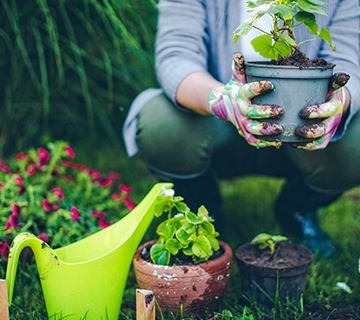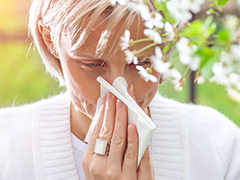Your Guide To Allergy-Free Gardening

Love gardening? Have allergies? This combination is nothing to sneeze at. Allergic reactions can put a damper on your hobby, but there are steps you can take to make gardening more of a pleasure than a pain.
- Check the National Allergy Bureau (NAB) and the pollen count in your area before you go out to garden. Try to avoid windy days where the pollen count and mold level are high.
- Wear gloves and a hypoallergenic face mask to protect your hands and face when you are doing yard work. This can reduce the amount of pollen contact with your skin and eyes.
- Practice good hand-washing habits after you go back indoors, and consider taking a shower immediately after gardening to reduce allergy symptoms.
- If you have asthma but love gardening, check out the programs we have to help with our Asthma Management Resources.
In addition, there are certain plants and flowers that naturally have a lower pollen count. See if you can incorporate these plants into your garden: cactus, cherry tree, dahlia, iris, magnolia, rose and tulip.
On the other hand, try to avoid these highly allergenic and pollen-producing trees and plants: ash, cedar, maple, oak, Johnson grass and Rye grass.
Article source link has expired


